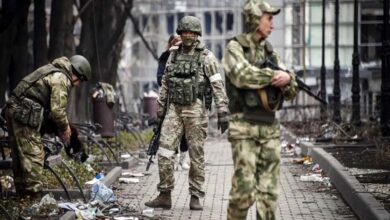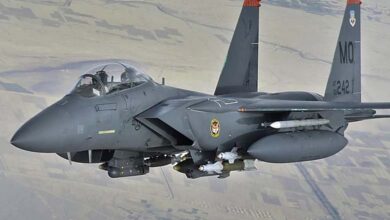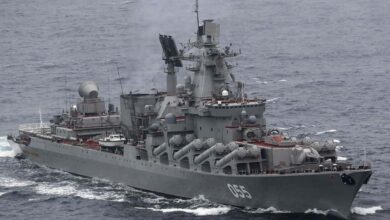World War II: The Strangest and Most Failed Weapons

World War II drove major world powers to develop technology, medicine, and communications to be effective and frightening in war.
Some achievements made during World War II formed the basis of modern technology, but others did not. Here are some of the strangest and craziest weapons developed by both sides during World War II.
Panjandrum:
The British army invented a cart-like device called Panjandrum to find a way to breach German concrete defenses in the Normandy area.
However, the problem is that the Panjandrum was one of the biggest military failures in weaponry and one of the most chaotic in modern military history.
Theoretically, the Panjandrum was designed to move at an enormous speed to crash into the concrete wall, leaving a large hole enough for a tank to pass through. Everyone thought it would be the fastest and most effective way to penetrate German fortifications and save countless soldiers trapped by mines, ground obstacles, and machine gun fire.
However, during testing, the device lost control repeatedly and veered off its intended path. In one test incident, generals had to flee to find a safe place.
Parachute Dummies:
The Royal Air Force and British Special Air Service conducted a deception operation as part of the Normandy landings in June 1944 to mislead the Germans and divert them from the actual drop zones of Allied forces.
According to the New Zealand Air Force Museum, to accomplish this, the British Air Force dropped about 400 parachute dummies outside the landing zones in Normandy and northern France.
According to the museum, these figures were less than half a meter tall, contained small explosives to destroy the dummy, and were equipped with noise makers imitating the sounds of gunfire.
Krummlauf Curved Barrel:
To solve the problem of shooting while hiding, the Germans manufactured a curved rifle barrel attachment that would allow soldiers to fire their weapons at close range.
But it turned out that this device was highly impractical. Bullets often split in half before exiting the barrel due to the curvature, and the attachment itself deformed under the immense pressure after a few hundred shots.
The Krummlauf was not commonly seen on the battlefield during World War II. However, the idea was logical, and military designers are still trying to implement it today.
Goliath Tank Destroyer:
The German tracked mine carrier “Goliath” was one of the deadliest weapons during the world war. These very small tanks, nicknamed “beetles” by American forces, were equipped with a pair of electric motors and guided by a joystick.
The small tank operated with two electric motors, later replaced by two fuel-burning engines, and was capable of carrying over 45.5 kg of high explosives.
The aim of the “Goliath” was to sneak under Allied tanks and plant its explosive payload in the weak underside, but the true success of the “Goliath” was that it paved the way for remotely controlled weapons, which have become the new form of warfare in our modern era.
Fugo Explosive Balloon:
Japan also had its share of strange weapons that entered service during World War II. In November 1945, Japan launched thousands of paper explosive balloons made from mulberry bark.
-
Destructive Instinct Force.. “Trumpophobia” invades America
-
British Report Warns – Taliban-ruled Afghanistan becomes new terrorist safe haven
The diameter of the Japanese balloon was 33 feet (about 10 meters) and it could carry approximately 454 kg.
The explosive balloons were launched into the Pacific jet stream, which quietly carried these large innovations from Japan to the United States without a pilot. The American National Public Radio reported that the journey took several days.
Despite launching thousands of these balloons, they were ineffective, not to mention resource-intensive, as assembling a single balloon took 30 minutes to an hour and required 30 men to complete.












